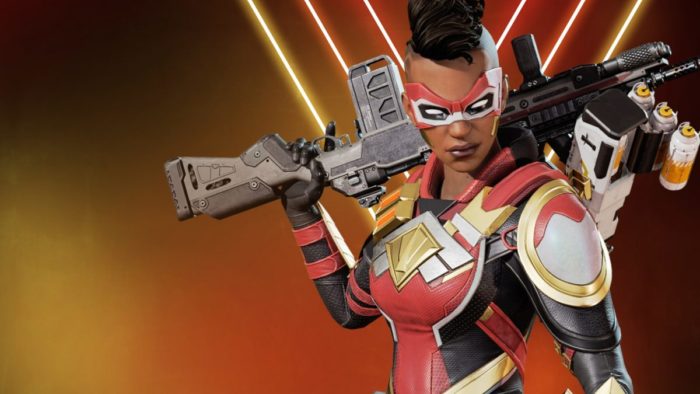Since Pathfinder: Wrath of the Righteous (WOTR) has barebones character appearance customization, the biggest dilemma you'll ever face in the character creation screen would be the class selection. All in all, there are 25 classes, each with its own playstyle and requisite. That's a dizzying number of options and if you're the kind of RPG player too concerned with min-maxing or breaking the game combat's technical rule, it's highly advised to pick the best one.
RELATED: Strongest Monsters In Pathfinder's Bestiaries
Hence, the context of "best" class here is that which turns the player character into demigods that can breeze through the game even on the most difficult difficulty level. So in the spirit of RPG power gaming, here are some of the best classes in the game based on community consensus.
Alchemist

- Difficulty: Four
- Alignment Requirement: None
- Intended Playstyle: Gadget & bomb maker, fights with inventions
The alchemist is a unique class as far as RPGs go since they rely on readiness and strategic knowledge using their inventions. They're mostly just bombs in this case but that doesn't mean the Alchemist is an incapable fighter.
Needless to say, the Alchemist's strength lies in its bombs, meaning picking a subclass that removes this aspect of the Alchemist is ill-advised. In any case, they're great at dealing big radiuses of damage against enemy groups and also have some crowd control tricks up their sleeve.
Skald
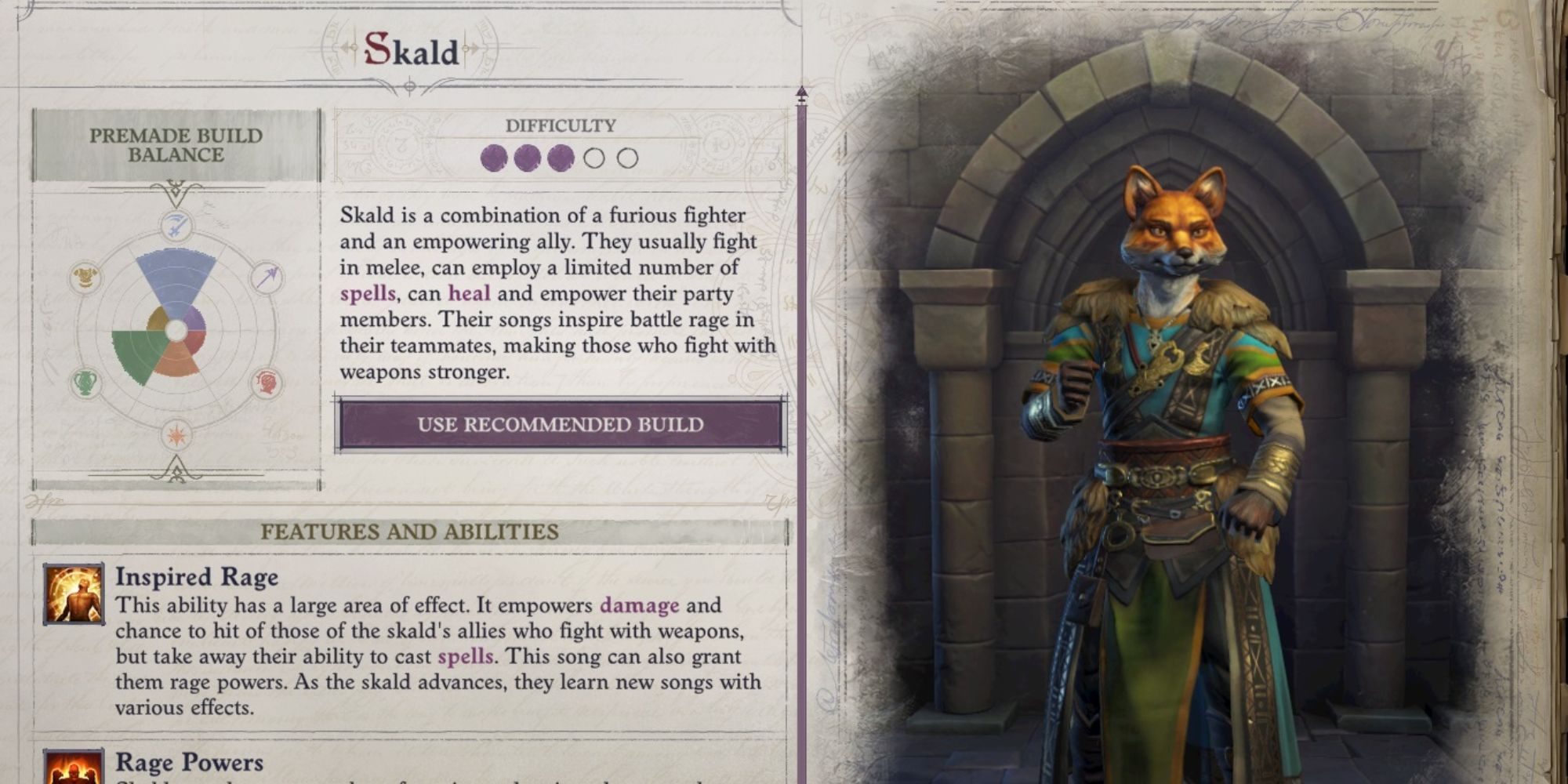
- Difficulty: Three
- Alignment Requirement: None
- Intended Playstyle: Party singer who can buff allies and debuff enemies
Think of Skalds as more serious and more sober versions of bards. They're wise men and women whose boundless wandering experience is committed to ink on paper and words on poetry. These songbirds thus recite their pieces in the heat of battle.
RELATED: The Best Archetypes In Pathfinder
They actually have some great useful abilities. Some of the subclasses for the Skald can essentially cast a party-wide Rage spell that fills everyone's hearts with battle fervor. That tends to be less effective if the party is full of spellcasters and magic nerds so pick a place for the Skald wisely.
Bard

- Difficulty: Three
- Alignment Requirement: None
- Intended Playstyle: Party buffer and combat 'everyman'
So why pick the bard over the skald? In most tabletop settings, they tend to be lecherous drunkards who bring a lute to battle. In here, they're also like that except that lute inspires everyone to fight more majestically and it also sometimes shoots magical sparks.
To that end, the bard is a more combat proficient buffer compared to the skald. Due to their proficiency in light one-handed weapons as well as their knowledge in a bit of magic, they can fit in every role in the party. Perfect for when you're trying to get the most out of everyone.
Paladin
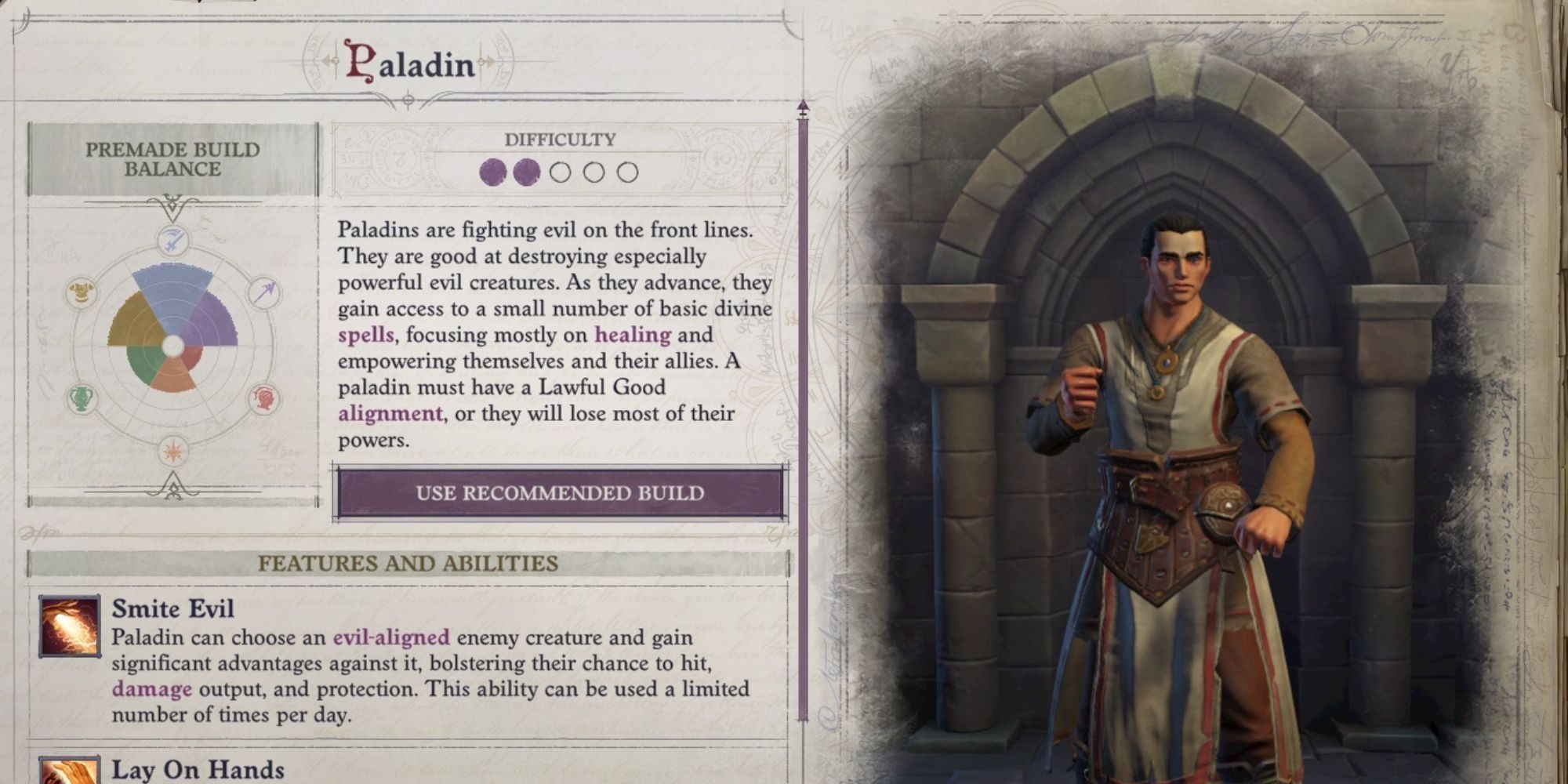
- Difficulty: Two
- Alignment Requirement: Lawful Good
- Intended Playstyle: Tanky warrior with support skills and high hatred for undead
Do you want the goody-two-shoes class? Then you can't go more thematically proper than the paladin. It's been a staple of both D&D and Pathfinder tabletop games; and is generally considered as a play-safe class for anyone just starting out.
RELATED: Strongest Pathfinder Monsters You Won't Find In The Bestiaries
In terms of party usefulness, Paladins are also the group everyman except they will try to police their companions into abstaining from alcohol or anything unholy. While they are powerful and even formidable as frontliners, keep in mind that you're stuck with playing as a Lawful Good character. That's not exactly an exciting roleplaying experience.
Cleric
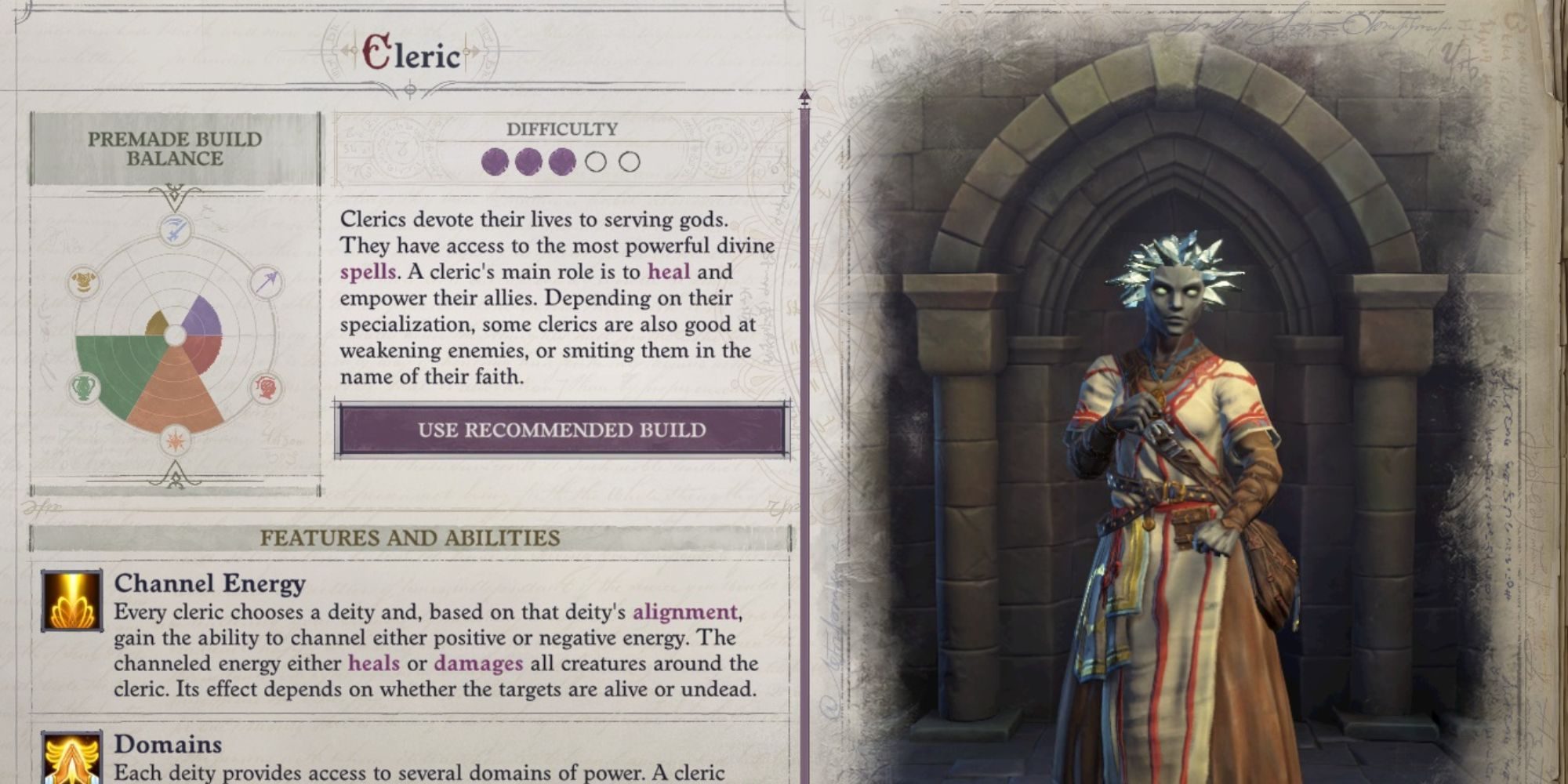
- Difficulty: Three
- Alignment Requirement: A tier ahead of the chosen deity
- Intended Playstyle: Stereotypical healer; more supportive than the paladin
The cleric has been an RPG staple for so long, you most likely don't need an explanation for why this class is necessary. But for the sake of beginners, the cleric is the pillar upon which the party stands on. Without them, the whole party more often than not collapses.
They have the most healing spells in the game and also the highest healing capacity. This is incredibly helpful if you don't want to waste too much time and opportunities camping to rest. Beyond that, clerics are also vigilant undead hunters and can deal with unholy things easily.
Bloodrager

- Difficulty: Three
- Alignment Requirement: None
- Intended Playstyle: Damage focused melee class that's essentially a shamanic barbarian
Think of the barbarian except they read some old and tattered books and paid more respect to culture. That's the bloodrager. Bloodragers can easily channel into their anger issues the same way a barbarian does except they manifest their ancestral spirit in doing so.
RELATED: Classic Puzzles Every Good DM Uses In Dungeons And Dragons
You can call them a stand if you're a Jojo fan for less confusion. Anyway, bloodragers are a great alternative if you're tired of playing a class that's too simple and mindlessly offense-focused. They're also proficient in all martial weapons and can defend themselves, just more stylishly than their barbarian cousins.
Slayer
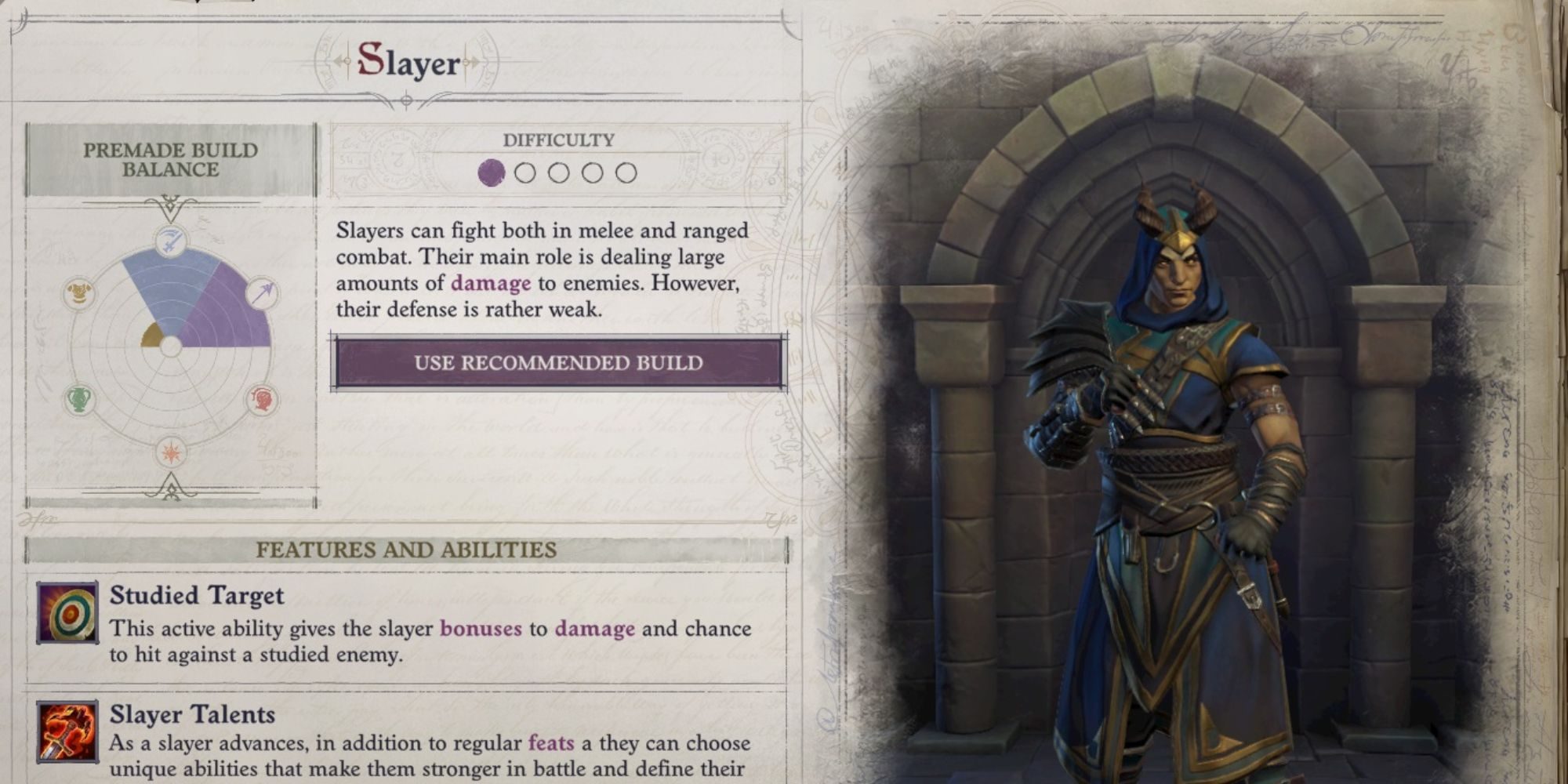
- Difficulty: One
- Alignment Requirement: None
- Intended Playstyle: Boss killer and glass cannon melee fighter
Slayers focus on one thing only: ensuring that the target they've studied obsessively before they sleep at night has no chance of stitching back their jugular vein. They employ a combination of stealth and combat fury in order to kill any target at whatever cost.
That cost is most often their personal safety; they lack defensive abilities in their kit. That doesn't matter much if you have a support or tank class. Bringing a slayer means boss fights and taking out high-value targets in the field are faster.
Wizard
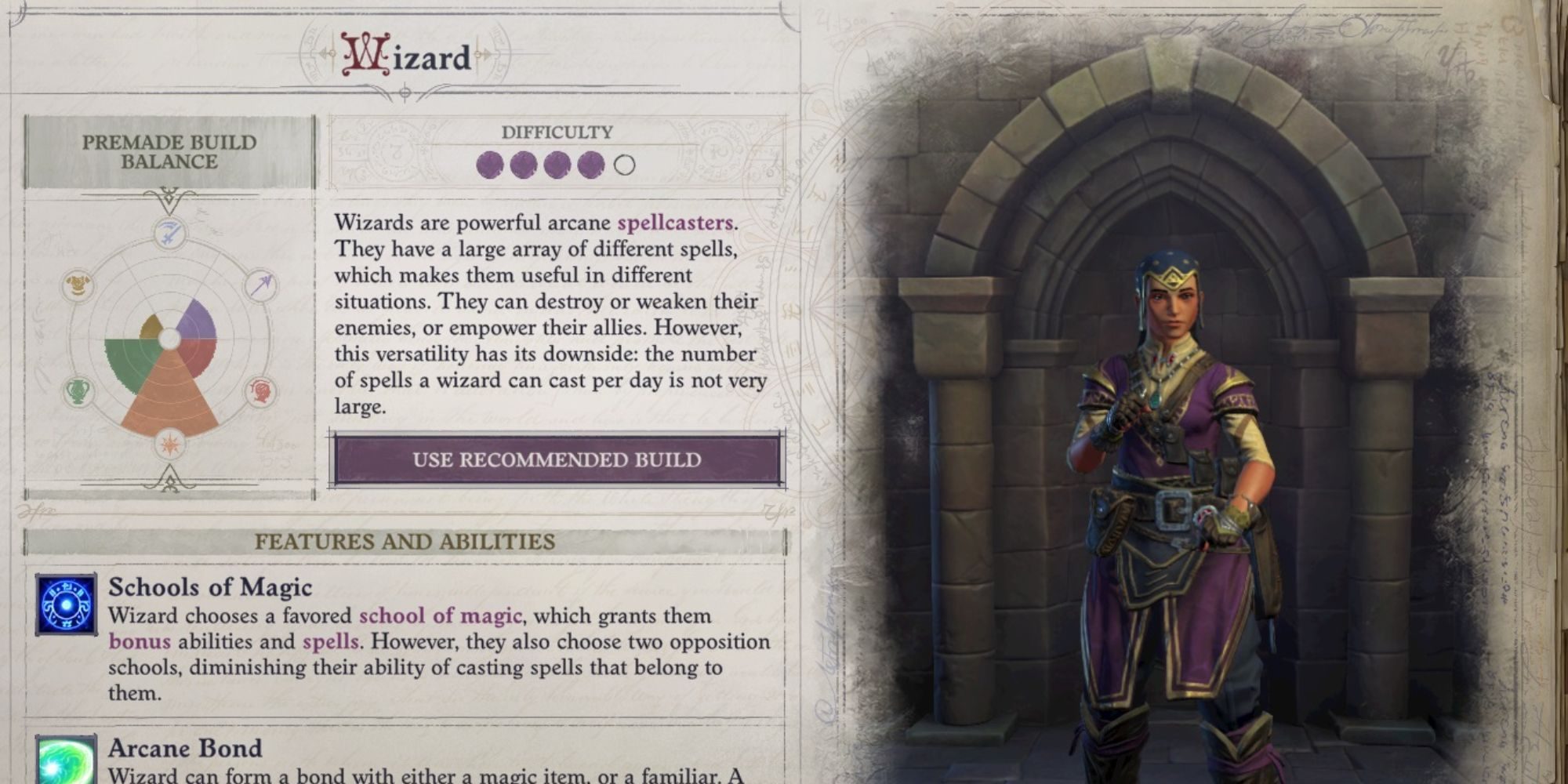
- Difficulty: Four
- Alignment Requirement: None
- Intended Playstyle: Glass canon spellcaster with versatile spell options
No surprise here; the wizard has always been one of the most powerful classes in the game, even in the tabletop medium. When it comes to spells, the whole game is the wizard's playground. They can learn and become an expert in one magic school to gain even better proficiency with that spell discipline.
RELATED: Dungeons and Dragons: The Most Quirky Magical Items From Xanathar's Guide to Everything
As always, they have one glaring weakness: they're not good in melee or physical combat. Wizards don't wear armor because it can impede their movement. Hence, they'll need some dedicated party bodyguards to survive most combat situations. If they manage to stay alive though, the enemy surely won't.
Kineticist
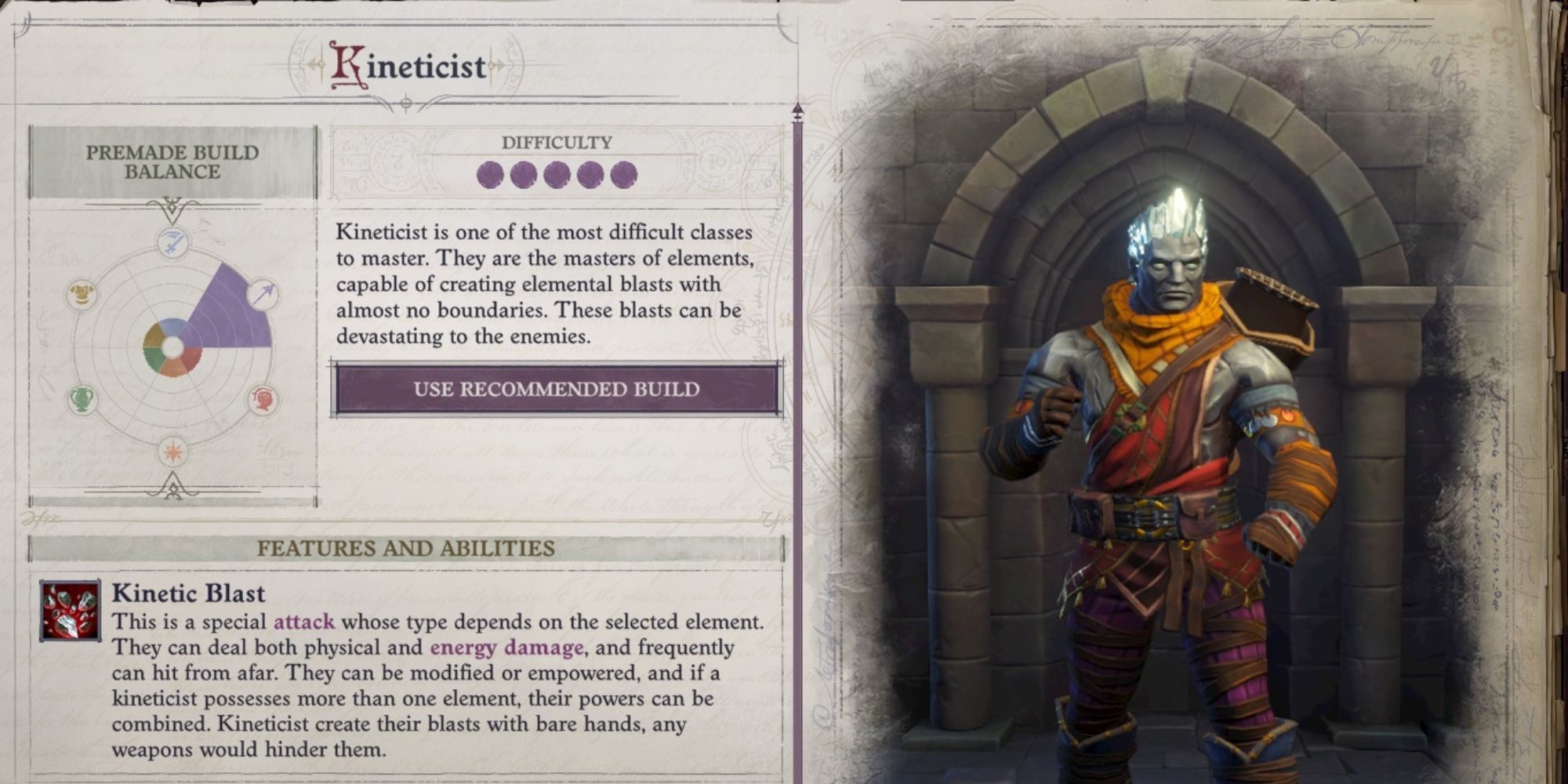
- Difficulty: Five
- Alignment Requirement: None
- Intended Playstyle: Similar to the wizard but with telekinetic abilities and more debuff tricks
The kineticist is a more complex version of the wizard and you can regard them as the resident telekinetic mutants of the Pathfinder mythos. Whereas wizards need to study their spells first in order to prepare them the kineticist's power comes from their being able to manipulate the physical world.
Thus, many of their spells are elemental. Some subclasses dabble in psychokinetic stuff and can negatively affect their enemies' will. Getting them right or the proper spell combos that do the most damage takes work but it's all worth it.
Sorcerer
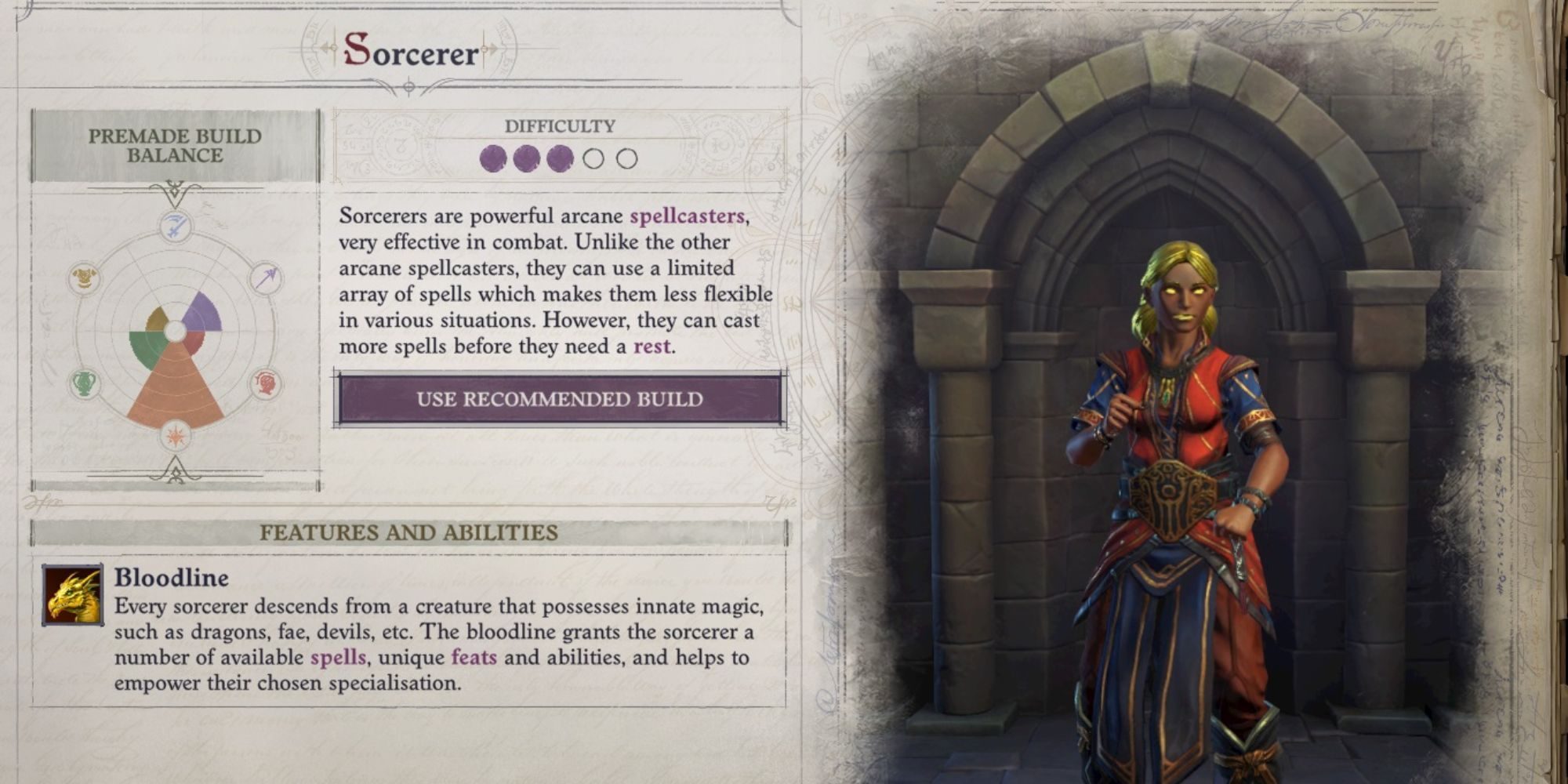
- Difficulty: Three
- Alignment Requirement: None
- Intended Playstyle: Spellcaster but with wilder spells than the wizard or kineticist
For something that's more of a cross between the wizard and the kineticist but easier to use, then these blessed magic users ought to be right up your alley. They rely on their bloodline instead of their studies in order to conjure magic abilities.
Thus, the spells they can use are more supernatural or even metaphysical in nature. Sorcerers have always been one of the most powerful classes in Pathfinder and they retained their position in the status quo here. It just goes to show how one's ancestor accidentally mating with a dragon or a demon can do wonders for future generations of sorcerers.
NEXT: Pathfinder: Kingmaker – Best Things About The Console Version & the Worst


